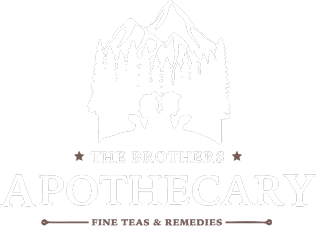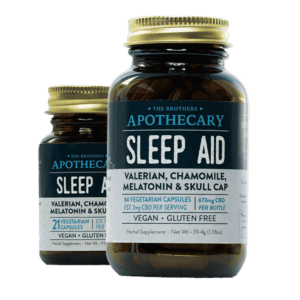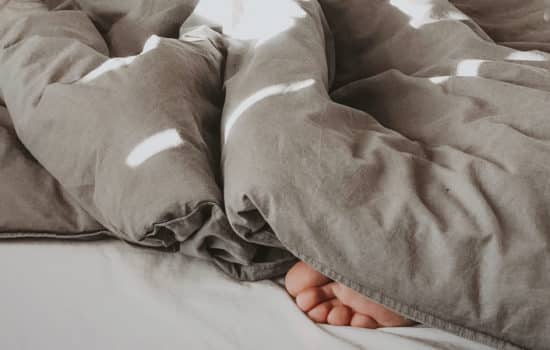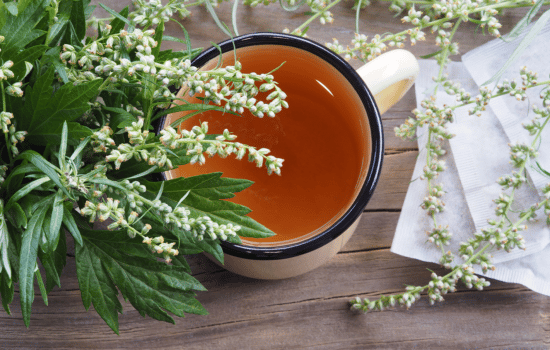The United States has had a somewhat strange relationship with hemp, shifting from relying heavily on the hardy plant in the 1940s to banning its growth completely for over 60 years.
With hemp cultivation only recently becoming legal in the U.S. again, many of us are unfamiliar with the plant’s long and fascinating history.
So what exactly is the history of hemp? What has it been used for? Why did it become illegal in the U.S., and what might the future hold for hemp?
We’re going back to the beginning today with The Brothers Apothecary.
When Was Hemp First Discovered?
Hemp was originally found in Central Asia, and humans saw the plant’s potential early on.
Where Was It Found?
The earliest recording of hemp cultivation dates back to 2800 BCE in China, where it was used to make paper and textiles.
Hemp growth spread through the Mediterranean and Europe during the middle ages and was brought to what is now considered the U.S. in the early 1600s.
When Was Hemp First Used?
Humans have been using hemp for over 4,000 years, making it one of the oldest cultivated crops in human history. And the versatile and sustainable crop has greatly benefited us over the years.
Hemp is an environmentally friendly crop with an impressive range of uses.
What Was Hemp Used For?
The fibrous stalks of the hemp plant have been used to make papers, clothing, ropes, and sails. These are some of the earliest known uses for hemp.
Within a few thousand years of discovery, there is evidence that humans began using the hemp leaves and buds in teas, medicines, and for smoking. With naturally low levels of THC, the hemp plant would have been smoked then for the same reason it is now: the naturally soothing benefits of the CBD phytocannabinoid.
The edible hemp has also long been used as a food source, as the hemp seed is antioxidant and protein-rich superfood.
Now fast forward to the 1940s, when another use for hemp came to light: plastics.
In 1941, Henry Ford created a prototype of a car with an impressively sturdy body made of plastic that was 70% hemp. Hemp-derived bioplastics were proven to be an environmentally friendly and biodegradable alternative to petroleum-based plastics, which require fracking to retrieve and take hundreds of years to breakdown once discarded.
So why didn’t hemp plastics catch on?
When Did Hemp Stop Being Used?
The pushback against hemp that took place between the 1920s and 1950s was multifaceted, and had more to do with what was going on in the country at the time than hemp itself.
Why Did Hemp Become Illegal?
Anti-Cannabis Propaganda
The first hints of anti-hemp beliefs came in the 1920s and 1930s when a rise in immigration from Mexico to the U.S. during the Mexican Revolution heightened racist and anti-immigrant sentiments in the U.S. Anti-cannabis fear-mongering and propaganda became commonplace, and in 1936 the propaganda film Reefer Madness was released, which depicted cannabis as violence.
Panic regarding cannabis use spread, and the U.S. government even popularized the term “marijuana” in place of “cannabis,” further pushing a racist narrative that led to inaccurate stereotypes and alarm.
And because both hemp and cannabis descend from the same plant (the Cannabis sativa), hemp was also swept up in the anti-cannabis propaganda.
Plastic Lobbying
Another important factor that led to the banning of hemp was corporate lobbying on behalf of petroleum-based plastics.
The 1930s was also when the DuPont company first started using crude oils to create plastics. This method required fossil fuels, but it was also cheap and easy.
Hemp-derived plastics were seen as competition and heavily lobbied against by the wealthy and prominent DuPont family.
Ultimately, the anti-cannabis propaganda and lobbying against hemp led to a cannabis tax in 1937, which made it costly to grow hemp anywhere in the U.S.
Hemp production did have a brief comeback in the 1940s, as the tax was briefly paused during World War II. The US Department of Agriculture even launched the Hemp for Victory program to encourage farmers to cultivate hemp that could be used to produce needed military supplies, such as rope.
Hemp production expanded by over 150,000 acres during the war. But, despite this clear evidence that hemp could be hugely beneficial, the cannabis tax was quickly reinstated once the war ended. Because the government-subsidized petroleum-based plastics and heavily taxed hemp, hemp-derived bioplastics never took off.
Was Hemp Made Illegal?
Following the cannabis tax, hemp cultivation was officially made illegal in the US in 1957, and was further criminalized in the 1970s when it was classified as a Schedule I controlled substance in the Controlled Substance Act was passed in 1971.
In 1974, scientist Ernest Small published his book, The Species Problem in Cannabis: Science & Semantics. Here, he proposed that hemp and cannabis be regarded differently in the eyes of the law based on whether the plant had more or less than 0.3% THC content.
Small later acknowledged this number was chosen rather arbitrarily, and there is no proof cannabis becomes psychoactive at 0.4% content. However, the 0.3% stuck, and the distinction between hemp and cannabis has depended on that 0.3% THC content ever since.
When Did Hemp Become Legal To Grow and Use?
Some states began legalizing industrial hemp growth in the early 2000s, and the 2014 Farm Bill permitted hemp cultivation through approved pilot programs. But it wasn’t until the 2018 Farm Bill that the federal ban on hemp cultivation was officially lifted.
The 2018 Farm bill removed hemp from the Controlled Substance Act, and legalized hemp growth in the U.S. for the first time in over half a century.
It is important to note, however, that growers still need to be approved for a license before they can start cultivating hemp, and the bill also barrs anyone with a cannabis-related felony within the last ten years from applying for commercial hemp growing license, leading many to rightly call for more racial equity and justice in the cannabis and agriculture industries.
What Is Hemp Used For Today?
Today, hemp seeds are used to create hemp oil and hemp protein powder, serving as a nutrient-rich plant-based source of protein.
And, of course, hemp is sourced to create beneficial CBD products. Here at The Apothecary, we sustainable source organic hemp to use in our CBD teas, oils, and other CBD products.
Hemp’s ability to serve as an environmentally friendly, carbon-capturing, and biodegradable plastic alternative is also getting a second chance. Many climate change activists are pushing the government to invest in hemp plastics.
In 2020, South Dakota University announced a research project meant to find more effective ways to extract and utilize cellulose from hemp that can replace a number of fossil-fuel-based plastics.
What Part of the Plant Is Hemp Made From?
The stalks of the hemp plant are used to make textiles, plastics, and cloth. Meanwhile, the flowers, leaves, and buds are where much of the cannabinoids live, and are used to make teas and CBD products. Every part of this sustainable plant can be used, reducing waste associated with several other crops.
Are Hemp and Marijuana the Same Thing?
Both hemp and cannabis (or marijuana) come from the Cannabis sativa plant. Legally, the two are separated based on their THC content. Any cannabis plant with less than 0.3% THC content in its dry weight is considered hemp, while plants with over 0.3% THC content are legally considered cannabis.
Are Hemp and CBD the Same Thing?
While hemp and CBD are not the same, CBD is the most active plant compound within the hemp plant.
Hemp refers to the entire plant: the stalk, buds, stems, and leaves. CBD is the phytocannabinoid found mainly within the leaves and buds of the hemp plant.
Hemp vs. THC: Does Hemp Cause a High?
The trace amounts of THC legally allowed in hemp plants are not enough to cause a high, even when taken in large doses. The main active cannabinoid in hemp is CBD, which can help promote relaxation and ease discomfort in the body without producing psychoactive effects.
The Bottom Line
The United States has had its ups and downs with hemp. Here at The Brothers Apothecary, we are grateful to see the government becoming more accepting of this environmentally friendly crop and its wellness-boosting cannabinoid content, and we hope to see even more shifts in the right direction moving forward.
Interested in learning more about how hemp can benefit your wellbeing? Check out our wide array of CBD products sourced from organic and locally grown hemp at The Brothers Apothecary shop!
Sources
Hemp-based plastic | The Hash Marihuana & Hemp Museum
The Species Problem in Cannabis: Science & Semantics | Ernest Small
The Future For Hemp | European Industrial Hemp Association
The Science and Engineering for a Biobased Industry and Economy | SOUTH DAKOTA STATE UNIVERSITY
Jesse Richardson is the co-founder of The Brothers Apothecary. He's an avid tea drinker and the primary creator behind The Brothers' products. An undergraduate of UCLA for Political Science, Jesse currently studies Medicinal Plants at Cornell University and The International School of Herbal Arts & Sciences.


















